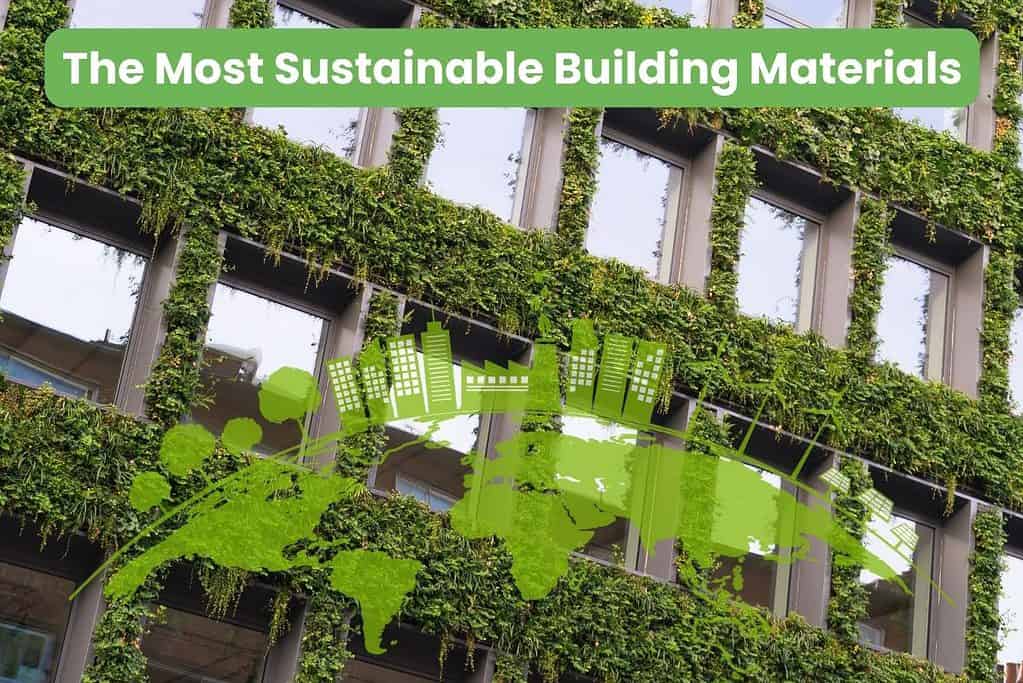Sustainable Building Materials – Qualities and Use
The Importance of Sustainable Building
In an era where environmental consciousness is paramount, the concept of sustainable building has emerged as a crucial approach to mitigate the impact of construction on the environment. Sustainable building is not just about constructing structures that are energy-efficient and eco-friendly; it also involves a holistic approach to material selection, design, and lifecycle management. This comprehensive strategy ensures that buildings not only reduce their carbon footprint but also contribute positively to the environment and society. This article delves into the principles of sustainable building, focusing on the importance of selecting environmentally sustainable building materials and the application of Life Cycle Design principles.

The Role of Sustainable Building Materials
Careful selection of environmentally sustainable building materials is the easiest way for architects to begin incorporating sustainable design principles in buildings. Traditionally, price has been the foremost consideration when comparing similar materials or materials designated for the same function. However, the “off-the-shelf” price of a building component represents only the manufacturing and transportation costs, not social or environmental costs. Sustainable building materials are those that are sourced responsibly, have a minimal environmental impact, and are durable and recyclable. By choosing such materials, architects and builders can significantly reduce the environmental footprint of a building over its entire lifecycle.
Understanding Life Cycle Design
The principles of Life Cycle Design provide important guidelines for the selection of building materials. Life Cycle Design is an approach that examines the environmental impact of a product from its inception to its disposal. Each step of the manufacturing process, from gathering raw materials, manufacturing, distribution, and installation, to ultimate reuse or disposal, is examined for its environmental impact. This comprehensive evaluation allows for a more informed decision-making process, ensuring that the materials chosen have the least possible negative impact on the environment.
The Three Phases of a Material’s Life Cycle
A material’s life cycle can be organized into three phases: Pre-Building, Building, and Post-Building. These stages parallel the life cycle phases of the building itself. Understanding these phases is essential for architects and builders who aim to minimize the environmental impact of their projects.
Pre-Building Phase
The Pre-Building phase encompasses the extraction and processing of raw materials. This stage involves the sourcing of materials, which can have significant environmental implications. For example, the extraction of non-renewable resources such as metals and minerals can lead to habitat destruction and pollution. In contrast, the use of renewable resources such as bamboo and sustainably harvested wood can reduce the environmental impact. Additionally, the processing of raw materials into usable forms also consumes energy and resources. By selecting materials that require less energy to process, architects can further reduce the environmental footprint of their projects.
Building Phase
The Building phase includes the actual construction process, from the transportation of materials to the site to the installation of components. During this phase, the focus is on minimizing waste and energy consumption. Efficient construction practices, such as just-in-time delivery of materials and the use of prefabricated components, can significantly reduce waste and energy use. Additionally, the choice of materials that are easy to install and require less maintenance can also contribute to a more sustainable building process.
Post-Building Phase
The Post-Building phase involves the use, maintenance, and eventual disposal or reuse of the building materials. This stage is crucial for evaluating the long-term environmental impact of a building. Materials that are durable and require minimal maintenance can reduce the need for frequent replacements, thereby conserving resources. Moreover, the end-of-life considerations of materials are also important. Materials that can be easily recycled or reused at the end of their life cycle contribute to a circular economy, reducing waste and the demand for new resources.
Cost-Benefit Analysis in Sustainable Building
The evaluation of building materials’ environmental impact at each stage allows for a cost-benefit analysis over the lifetime of a building, rather than simply an accounting of initial construction costs. While sustainable materials may sometimes have a higher upfront cost, their long-term benefits often outweigh the initial investment. For example, materials that are energy-efficient and require less maintenance can lead to significant savings over the life of the building. Additionally, the use of sustainable materials can enhance the market value of a building, making it more attractive to environmentally conscious buyers and tenants.
Conclusion
Sustainable building is a multifaceted approach that requires careful consideration of the materials used, the design process, and the lifecycle of the building. By incorporating Life Cycle Design principles and selecting environmentally sustainable building materials, architects and builders can create structures that are not only eco-friendly but also economically viable. The future of construction lies in the integration of sustainable practices that benefit both the environment and society. As awareness of environmental issues grows, the demand for sustainable building solutions will continue to rise, driving innovation and progress in the industry.
External Links
For further reading on sustainable building and Life Cycle Design, the following resources are recommended:
These links provide additional information and resources for those interested in learning more about sustainable building practices and the importance of life cycle assessment in material selection.
